Key Takeaways:
- Understand the fundamental role of pole planting in maintaining balance and rhythm while skiing.
- Learn the correct technique for a good pole plant, including upper body positioning and timing.
- Discover how to practice pole planting to make it an integral part of your skiing technique.
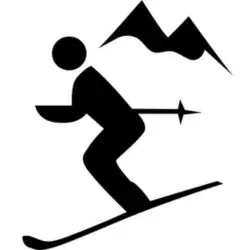
Pole planting is an essential skill that can significantly enhance your skiing experience. It's not just about using your ski poles to push yourself forward; it's a technique that, when mastered, can improve your balance, control, and timing on the slopes. Whether you're navigating through short turns or carving down the mountain at high speed, understanding how to pole plant skiing is a game-changer.
The Role of Pole Planting in Skiing
Pole planting serves multiple purposes on the slopes. It acts as a timing device, helping skiers maintain a constant rhythm as they transition from one turn to the next. For those skiing bumps or engaging in high speed gs turns, a good pole plant is crucial for maintaining balance and control. By planting the pole into the snow at the right moment, skiers can ensure their upper body is in the right position, which in turn helps to guide the lower body and skis in the desired direction.
The Anatomy of a Good Pole Plant
A good pole plant starts with the correct grip on your ski poles. Your elbows should be slightly bent, with your hands in front of you, allowing for a natural swing of the poles. When it's time to plant, the wrist should move forward, not the entire arm, to place the pole tip into the snow. This movement should be much more pronounced in short turns, where quick, successive pole plants are needed to maintain a nice rhythm.
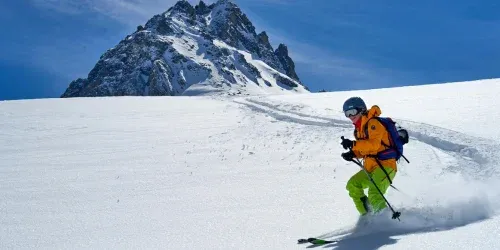
Positioning Your Upper Body
The upper body plays a crucial role in pole planting. Your shoulders should remain level and facing down the fall line, while your arms move independently. This separation allows for a solid ski technique where the upper body is stable, and the lower body can perform parallel turns effectively. When planting the pole, the arm forward movement should be over exaggerated in almost all cases to ensure the pole touches the ground at the right moment.
Common Mistakes in Pole Planting
When it comes to mastering the art of pole planting, even seasoned skiers can sometimes falter. A common mistake is the improper use of the downhill pole, which can throw off balance and timing. Skiers often either plant the pole too early or too late, disrupting the rhythm of their turns. It's crucial to synchronize the pole touch with the moment your downhill ski begins to carve into the slope. This ensures stability and a smooth transition into the next turn.
Another frequent error is neglecting the position of the wrist and hand. Some skiers keep their wrist too rigid, which can lead to a less effective pole plant and increased arm fatigue. Instead, keeping the wrist forward and flexible allows for much more pronounced punches into the snow. This technique helps maintain momentum and provides a solid foundation for each turn. Remember, the pole is an extension of your arm, and using it correctly is key to fluid movements on the slopes.
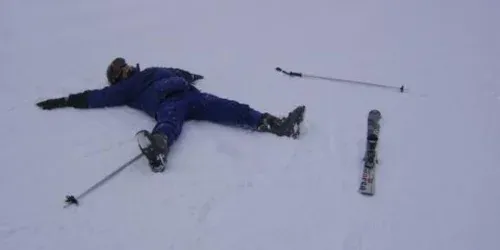
The Importance of Ski Pole Length
When it comes to mastering the art of pole planting, the length of your ski pole can make a significant difference. A pole that's too long or too short can throw off your balance and timing, which are crucial for effective pole planting. For the ideal pole length, a skier should flip the pole upside down, grabbing it directly under the basket. When the tip is touching the ground, your forearm should be parallel to the floor. This ensures that when you plant your pole on the hill, it helps rather than hinders your skiing technique.
Choosing the right ski pole is akin to selecting a dance partner; it needs to complement your movements and rhythm on the slopes. If you're a beginner, opting for a slightly shorter pole can be forgiving as you learn the basics of pole planting. As you progress and become more aggressive on the hill, a longer pole might be necessary to match your increased speed and sharper turns. Remember, the right length enhances your control and stability, making your descent smoother and more enjoyable.
Integrating Pole Plants into Different Skiing Styles
Pole planting isn't a one-size-fits-all technique; it should adapt to the skiing style of the skier. For those who enjoy the leisurely sweeps of alpine skiing, a gentle and rhythmic pole plant helps maintain a steady pace and provides a pivot point for turns. The poles become an extension of the skier's arms, offering a graceful flow down the hill. In this style, the pole plant is less about propulsion and more about maintaining a consistent rhythm and providing stability.
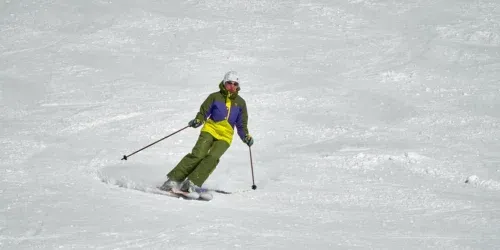
Conversely, for the adrenaline-fueled skier tackling moguls or engaging in freestyle skiing, pole plants become more aggressive and targeted. The poles are used to navigate tightly spaced bumps or to initiate quick, sharp turns. In these scenarios, the pole plant is a crucial element that allows the skier to maintain balance and control when the hill throws unpredictable terrain their way. By understanding how pole planting integrates with different skiing styles, skiers can better adapt their technique to the terrain and their personal skiing preferences.
Enhancing Your Ski Technique with Pole Usage
Incorporating ski poles into your technique is about more than just planting them into the snow; it's about using them to enhance your overall skiing experience. For those taking ski lessons, instructors often emphasize the importance of poles in maintaining balance and rhythm. When executing a parallel turn, for example, the poles can help guide your movement, with the pole touch acting as a metronome for your turns.
But it's not just about the turns. Ski poles can also assist in maintaining proper alignment of your legs and feet. By pointing the poles in the direction you intend to go, you create a visual line that helps keep your lower body in check. This is especially useful for other skiers on the slope who may be watching and learning from your technique. A well-executed pole plant, combined with precise leg and foot positioning, can make all the difference in conquering challenging terrain.
Timing Your Pole Plant
Timing is everything when it comes to pole planting. The pole plant action should coincide with the initiation of a new turn. Planting early or too late can throw off your balance and disrupt the flow of your turns. To achieve a constant rhythm, practice planting your pole as your downhill ski begins to point in the other direction. This will help you push off from the ground and into the next turn with better control and weight distribution.
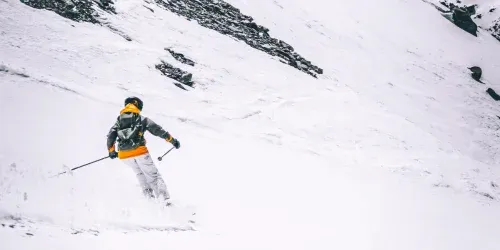
Using Your Poles Properly
Holding and swinging your ski poles properly is key to effective pole planting. Your arms should be in front of you with elbows slightly bent, allowing for a natural pole swing. When you plant the pole, your wrist should move forward, guiding the pole tip into the snow. This wrist-forward technique ensures a lightest touch, preventing you from leaning too much on the pole, which can affect your balance and control.
Practicing Pole Planting
Practice makes perfect, and this is especially true for pole planting. Start by practicing on gentle slopes where you can focus on the timing and technique without the added pressure of speed or difficult terrain. Work with a ski instructor if possible, as they can provide immediate feedback and help you correct any mistakes. With time, pole planting will become second nature, and you'll be able to incorporate it into your skiing in almost all cases.
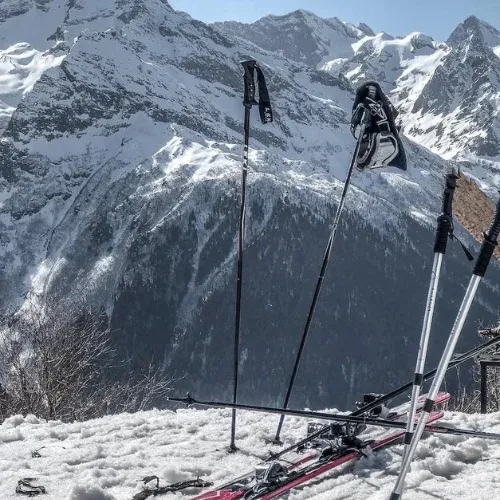
Summary
Pole planting is a fundamental part of skiing that, when executed correctly, provides balance, rhythm, and control. It involves a combination of proper upper body positioning, precise timing, and the correct use of ski poles. By practicing the techniques outlined in this article, skiers can make pole planting an almost unconscious part of their skiing, allowing for smoother, more efficient turns and an overall better experience on the slopes.
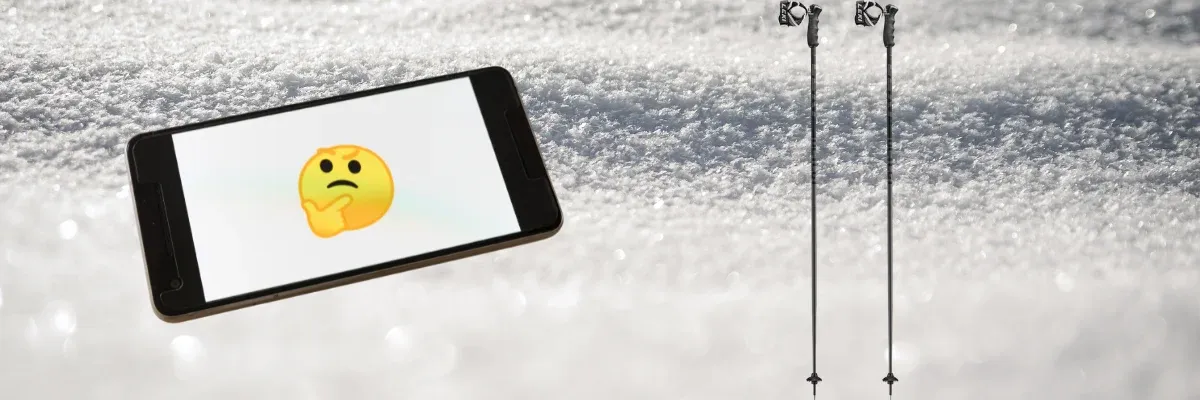
FAQs
Why is pole planting important in skiing?
Pole planting is important because it helps skiers maintain balance, establish a rhythm for turns, and provides a point of reference for the upper body, which aids in controlling the lower body and skis.
How do I know when to plant my pole?
The pole should be planted at the beginning of a new turn, as the downhill ski starts to point in the other direction. This helps to initiate the turn and provides support for the body as it transitions from one side to the other.
Can I ski without pole planting?
While it's possible to ski without pole planting, doing so can limit your ability to perform controlled, rhythmic turns, especially on more challenging terrain. Pole planting is a technique that enhances your skiing ability and should be practiced to improve overall performance.
Related Articles:











